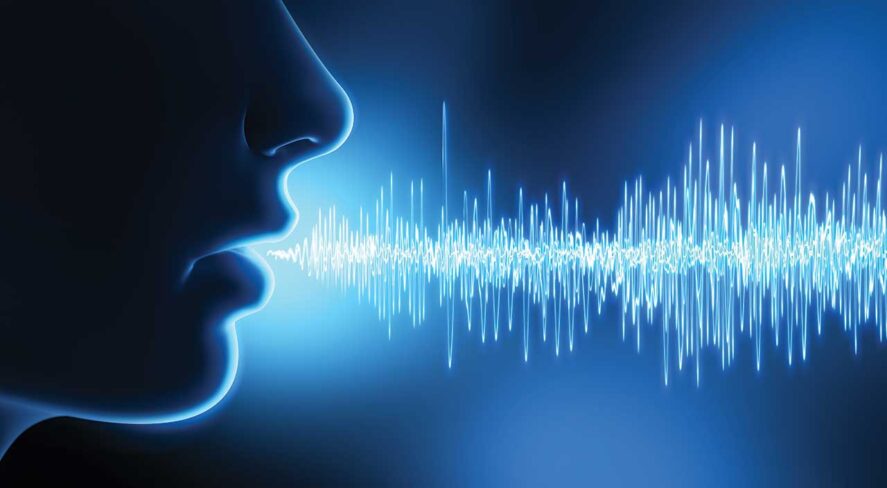How Audio Surveillance Can Help to Counter Emerging Threats

The ability to monitor sounds and voices provides fuller understanding of a situation

Traditional physical security measures are being tested like never before.
In the past five years, 60% of companies have reported encountering physical security breaches. As the frequency and sophistication of public safety threats increases, the demand for more comprehensive and efficient solutions will only continue to grow. Looking forward, it will be vital that organizations explore technologies at the cutting edge, many of which are transforming the way physical security systems are designed, managed and monitored.
One of the most promising developments in the field of security technology innovation is the integration of audio surveillance into end-to-end security solutions. Traditionally, physical security systems relied heavily on video surveillance and access control solutions to monitor and protect properties. While these methods remain essential, recent developments in audio surveillance offer a critical layer of insight, filling in gaps that even the most advanced video surveillance cameras cannot address. By incorporating sound analysis, real-time communication, and integrated crime deterrence measures, audio surveillance is helping to reshape the landscape of physical security and offering businesses a new level of proactive protection.
Growing Threats to Physical Security
Leading approaches to physical security typically involve a combination of perimeter intrusion detection solutions like surveillance cameras and video analytics, smart locks, automated alarms and intelligent access control systems. While these systems have a proven track record of success, many businesses are still experiencing intrusions. For instance, in 2023, researchers from Northeastern University found that hackers were able to exploit vulnerabilities in digital surveillance systems, allowing them to eavesdrop on most modern security cameras and even manipulate camera feeds. Further, criminals are finding ways to disable alarm systems, bypass access control points, and evade detection altogether.
Not to mention that human error still plays a significant role in security vulnerabilities, with employees sometimes leaving doors unlocked, failing to report suspicious activities, or overlooking signs of intrusion. Security operators themselves may also miss important details in video feeds or fail to respond to alarms in a timely manner due to information overload or the limitations of existing systems.
As threats evolve, businesses and security professionals are finding more areas where traditional methods are no longer sufficient. This is where audio surveillance is becoming a key asset.
Audio Surveillance in Modern Security Systems
Audio surveillance adds a new dimension to physical security systems, complementing video surveillance and access control with real-time monitoring of sounds and conversations. Put simply, audio surveillance acts as a force multiplier. It is an additional layer of security that enhances situational awareness and provides security teams with crucial data to detect and respond to potential threats faster and more effectively.
Unlike video cameras, which only provide visual information, audio systems can pick up sounds that may indicate suspicious behavior – on or off camera – and even add context to crimes committed in-frame. This capability enables security teams to listen in on specific locations, collect additional data points to verify and classify alarms, and engage with suspects in real time in systems outfitted with two-way audio capabilities. When combined with video surveillance and access control systems, audio surveillance contributes to a more integrated, comprehensive security solution that is capable of addressing both physical and behavioral threats.
Key Features
Here are some of the leading features of audio surveillance solutions that are helping providers and end users to reimagine the future of security.
Audio Data for Alarm Verification
One of the most critical roles of audio surveillance in physical security is its ability to verify alarms in real time. Traditional alarm systems rely on sensors to detect motion, door tampering or other signs of intrusion. However, these systems can be subject to false alarms, such as pets moving through sensor zones or environmental factors like wind or rain. This can lead to unnecessary security responses and a backlog of alerts for security operators to sift through.
Audio surveillance helps reduce false alarms by providing an additional layer of verification that helps security personnel on and offsite confirm the veracity of alarm events. When an alarm is triggered, audio sensors can instantly detect any unusual sounds – such as breaking glass, gunshots or raised voices – that might indicate a security breach. This allows security teams and first responders to evaluate the situation more effectively before responding, saving time and resources while improving response accuracy.
For example, in retail environments, audio surveillance can confirm whether an alarm triggered by an unauthorized person attempting to enter the premises is a genuine threat or a simple mistake. In corporate settings, it can alert security personnel to sounds of aggression, such as shouting, which can help prioritize a response.
Two-Way Communication Capabilities
Audio surveillance also offers a powerful feature that enables security personnel to communicate with authorized and unauthorized visitors in real time: two-way communication.
Security personnel can use this feature to issue verbal warnings, deter criminal activity, or even de-escalate potentially dangerous situations without having to physically intervene. For example, if a security guard notices suspicious behavior or a person in a restricted area, they can use the two-way audio capabilities to address the individual, tell them they are being observed, and ask them to leave the premises. This approach can prevent situations from escalating and often serves as an effective deterrent.
Prerecorded Messages as Crime Deterrent
Another important feature of audio surveillance is the use of pre-recorded messages to deter criminal activity. Many businesses have used signs, alarms and flashing lights as deterrents for years, but audio messages take deterrence to a more personal level. While some criminals may expect to trigger an alarm during an unauthorized intrusion, hearing the voice of a security officer notifying them that they are being recorded can compel them to change course.
Pre-recorded messages can be triggered automatically or manually by security personnel when suspicious activity is detected. These messages might include warnings such as, “You are being recorded, and the police have been notified,” or “Please leave the premises immediately.” These messages can also be tailored to fit needs specific to the deployment. For example, in public spaces, audio systems can broadcast generic deterrent messages, while in more sensitive areas, such as high-security buildings, the messages can be more focused and direct, enhancing the sense of authority and control.
The Future of Audio Surveillance in Physical Security
As audio surveillance technology continues to evolve, its integration into physical security systems will only grow more sophisticated. Future innovations may include features like artificial intelligence-powered sound detection, in which advanced algorithms analyze audio data to identify specific sounds, such as conversations that suggest a future threat. Additionally, audio systems will likely become even more integrated with other security technologies, such as automated video analytics, allowing for a holistic, multilayered approach to threat detection and response.
Audio surveillance is poised to become more critical as businesses and security professionals look to provide more proactive, intelligent and comprehensive protection. By complementing video surveillance and access control systems, audio surveillance enhances security, reduces response times, and helps businesses stay one step ahead of potential threats. In the modern world of physical security, integrating audio surveillance is not just a technological trend, it is quickly becoming an essential component of any advanced security strategy.
Incorporating this multifaceted approach into security systems enables businesses to protect their assets, employees and customers while minimizing the risks posed by both internal and external actors. As threats evolve, audio surveillance will play an increasingly vital role in the future of physical security.
